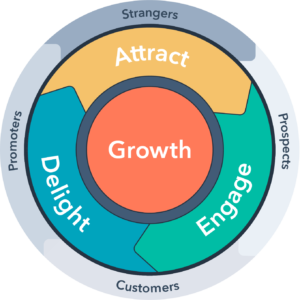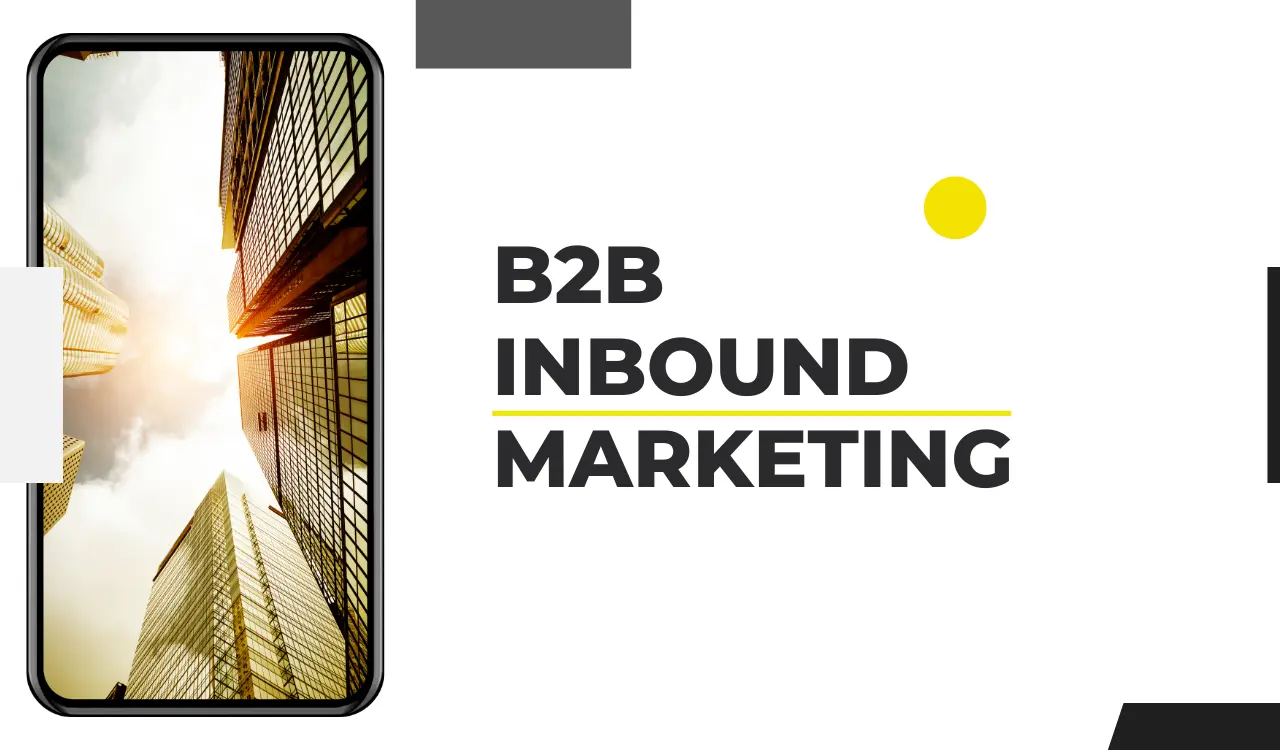What is B2B Inbound Marketing?
B2B inbound marketing is the process of attracting potential customers to your business through content marketing.
It involves creating and sharing content such as blogs, ebooks, webinars, and videos that are tailored to the target audience. B2B inbound marketing is the process of attracting potential customers to your business through content marketing.
It involves creating and sharing content such as blogs, ebooks, webinars, and videos that are tailored to the target audience.
What Is the Flywheel?

Types of B2B Inbound Marketing Content
– Blogs – Companies can use blogs to create engaging and informative content for their target audience.
– Ebooks – Ebooks are a great way to provide information about your product or service as well as build credibility.
– Case Studies – Case studies are another great way to build credibility and inform potential customers while also increasing brand awareness.
– White Papers – White papers are great for explaining complex ideas in simple terms and can be a useful tool for B2B companies.
– Infographics – Infographics are visual summaries and simplifications of information that makes your content more appealing and shareable.
– Webinars – Webinars are live online seminars that bring together experts in your industry to host discussions and answer questions from potential customers.
– Videos – Videos are an engaging and visual medium that can be used to provide information about your product or service.
Search Engine Optimization (SEO)
Search engine optimization, or SEO, is the process of optimizing your website’s content and structure to rank higher in search engine results and drive more traffic to your site.
B2B inbound marketing primarily focuses on driving traffic to your website where you can then convert those potential customers into customers once they’ve opted-in to your email list.
To do this, you need to make sure your website content is optimized to rank higher in search engine results.
Most B2B companies focus on driving traffic through organic search as opposed to paid search marketing. B2B businesses can drive organic search engine traffic through SEO best practices such as creating high-quality content, ensuring your content is properly structured and optimized, and using the right keywords and phrases.
Email Marketing
Email marketing is a great way to stay top of mind with your current customers while also attracting new customers to your brand.
B2B companies can use email marketing to re-engage past customers, increase brand awareness, and drive more sales. Many B2B companies see a 30%+ increase in revenue when they invest in email marketing.
An effective email marketing strategy for B2B inbound marketing will include multiple email nurture sequences. These sequences include auto-responder series designed to educate and engage your potential customers and move them down your sales funnel towards becoming paying customers.
Social Media Marketing
Social media marketing is the process of engaging your potential customers and building your brand online through social media platforms such as Facebook, Instagram, LinkedIn, and Twitter. B2B marketing campaigns can be more effective when they incorporate social media channels.
The best way to approach social media marketing for B2B inbound marketing is to take a strategic approach and focus on creating quality content that resonates with your target audience.
Benefits of B2B Inbound Marketing
– Increased Traffic and Brand Awareness – B2B inbound marketing is a great way to attract new visitors and build brand awareness. By creating high-quality content, you can drive more traffic to your website and build a larger audience.
– More Conversions – By creating high-quality content that educates and engages your potential customers, you can increase the number of conversions. This will help you generate more revenue from each visitor to your site.
– Higher Customer Retention – B2B inbound marketing is also great for retaining customers. By staying top of mind with your existing customers, you can reduce the amount of customers who leave your brand and look for a different solution.
– More Trustworthy – B2B inbound marketing allows you to tell your brand story and provide useful information about your product or service. By doing so, you become a more trustworthy and reliable brand.
– Better Positioned in the Market – B2B inbound marketing allows you to position yourself as an industry leader by creating unique and informative content that is tailored to your target audience. This will help you stand out from the competition.
How to Implement
For B2B inbound marketing to be successful, you’ll need to follow a strategic and well-planned approach.
The first step to implementing B2B inbound marketing is to create a plan.
– Define Your Target Audience – The first step is to define your target audience and create personas. This will help you identify the right audience for your business and what they’re looking for. – Choose a Workflow – Once you’ve defined your target audience, you’ll want to choose a workflow that makes sense for your business.
There are many different workflows available, so find the one that works best for you and your target audience. – Create a Content Calendar – Once you’ve chosen a workflow, you’ll want to create a content calendar.
A content calendar allows you to plan and schedule your content so that it’s posted at the right time and reaches your target audience when they’re most engaged and interested in what you have to say. – Create a Code of Ethics – Finally, you’ll want to create a code of ethics that outlines your standards for content creation and online behavior.
This will help you stay consistent and keep your brand focused.


